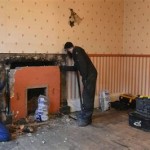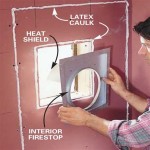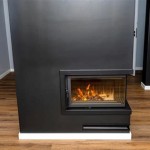Gas Log Inserts for Wood Burning Fireplaces: A Comprehensive Guide
A gas log insert is a convenient alternative to traditional wood-burning fireplaces, offering the ambiance of a real fire without the hassle and mess. These inserts are designed to fit into existing wood-burning fireplaces, transforming them into gas-fueled hearths. This guide explores the benefits, features, and considerations of installing a gas log insert in your home.
Benefits of Gas Log Inserts
Gas log inserts provide numerous advantages over wood-burning fireplaces, making them a popular choice for homeowners seeking a cozy and efficient heating solution.
Convenience and Ease of Use
One of the most significant benefits of gas log inserts is their convenience. Unlike wood-burning fireplaces that require chopping, stacking, and hauling firewood, gas log inserts simply require turning a knob to ignite the flames. No more backaches or messy cleanup from ashes and soot. The ease of use makes gas log inserts ideal for busy families or individuals who want to enjoy a fire without the hassle.
Clean and Efficient Heating
Gas log inserts are incredibly efficient, producing significantly less smoke and ash compared to wood-burning fireplaces. This cleaner burning translates to fewer emissions and less maintenance. Additionally, gas log inserts can provide a reliable source of supplementary heat, especially during cold winter months. They typically offer higher heat output and consistent temperature control compared to wood-burning fireplaces.
Enhanced Aesthetics and Ambiance
Gas log inserts are available in various styles and designs, replicating the look and feel of real logs and flames. With realistic-looking logs and flickering flames, these inserts create a warm and inviting atmosphere. The ability to adjust the flame height and intensity adds further customization to enhance the ambiance of any room.
Types of Gas Log Inserts
Gas log inserts are available in various configurations and features. Understanding the different types can help you choose the best option for your needs.
Vent-Free vs. Vented Inserts
Gas log inserts come in two primary types: vent-free and vented. Vent-free inserts, as the name suggests, do not require a chimney or vent to exhaust combustion byproducts. They instead utilize a sealed combustion system that releases exhaust gases directly into the room. However, vent-free inserts are not suitable for all homes, and local regulations might restrict their usage.
Vented inserts require a chimney or vent to exhaust combustion byproducts. These inserts are generally safer and more widely accepted, but they require proper installation and regular maintenance.
Natural Gas vs. Propane
Gas log inserts can be fueled by either natural gas or propane. Natural gas is typically cheaper and more readily available, while propane offers higher BTU output and flexibility, as it can be used in areas without natural gas lines. The choice between natural gas and propane depends on your location, budget, and individual needs.
Factors to Consider When Choosing a Gas Log Insert
Several factors should be considered when selecting a gas log insert for your home.
Fireplace Size and Dimensions
The size and dimensions of your existing fireplace are crucial factors when selecting a gas log insert. Measure the width, depth, and height of the fireplace opening to ensure the insert fits properly. Ensure the insert fits snugly without any gaps that could lead to heat loss or safety hazards.
Heat Output and BTU Rating
The BTU rating of the gas log insert indicates the amount of heat it can generate. Consider the size and insulation of your room to determine the appropriate heat output. A larger room will require a higher BTU rating to maintain a comfortable temperature. Consult with a heating professional to determine the right BTU rating for your specific needs.
Gas Supply and Connection
Ensure that you have a gas line running to your fireplace or are willing to invest in installation. If you have natural gas, you will need to connect the insert to the existing gas line. If you have propane, you will need to install a propane tank or connect to a propane line. If you are uncertain about the gas supply or connection, consult with a certified gas installer.
Style and Aesthetics
Gas log inserts come in a variety of styles and designs. Choose an insert that complements your fireplace's decor and personal preferences. Some inserts feature realistic-looking logs and flickering flames, while others offer more contemporary and minimalist designs.
Safety Features and Certifications
Safety is of paramount importance when choosing a gas log insert. Ensure that the insert is certified by reputable organizations such as the American Gas Association (AGA) or the National Fire Protection Association (NFPA). Look for features such as automatic shut-off valves, pilot light safety systems, and carbon monoxide detectors.
Installing a gas log insert can be a significant investment. However, these inserts offer numerous benefits, from convenience and efficiency to enhanced aesthetics and ambiance. By carefully considering the factors discussed above, you can select the right gas log insert for your home and enjoy the cozy warmth and beauty of a real fire without the fuss and mess.

Napoleon Gl18e Vented Gas Log Set 18 Inch

Fireside Grand Oak Gas Log Sets Logs 324 Capo

How Do Gas Logs Work Hocon

Napoleon Reversible Vented Gas Log Set Logs Stove Hearth Patio

Fireplaces Inserts Wood Gas Fireplace Xtrordinair

Vented Fireplaces And Gas Logs Palmetto

White Mountain Hearth Lprxx V Er Kit Pioneer Refractory Complete Fireplace Gas Log Set

Pleasant Hearth 18 Dual Fuel Wildwood Vent Free Gas Log Set 30 000 Bt

Vented Gas Logs Heater Or Decorative Bart Fireside

Peterson Real Fyre Vented Gas Log Set Burnt Aspen Rh R H Charred Evergreen Oak
Related Posts








